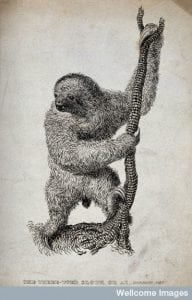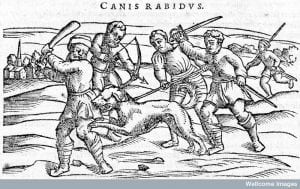By James Hawkes
The sheer immensity of Sloane’s collection poses a daunting challenge for the researcher, especially given its present division among different institutions. It might be useful to consider Sloane’s collection alongside smaller and more manageable (not to mention intact!) ones.
I recently had the opportunity to travel to the United Kingdom as part of a senior-undergraduate course offered by the University of Saskatchewan. Coins in Early Modern Collections of Curiosities was a hands-on study of coins in two early modern cabinets of curiosities: John Bargrave’s seventeenth-century collection (Canterbury Cathedral) and William Constable late 18th century cabinet of curiosities (Burton Constable).
Although Sloane’s numismatic collection has physically endured better than, say, his beloved butterflies, we don’t have many details about this part of the collection. The catalogues describing Sloane’s coins disappeared during the Second World War. But by studying other complete (if comparatively small) early modern collections of coins, gives insight into Sloane’s goals and influences.
Cabinets of Curiosities were intended to represent the whole of Creation in microcosm, something far easier to discern with intact collections. In our age of narrow specialisation, Sloane’s collection has been divvied up so thoroughly between the British Library, the British Museumn, and the Natural History Museum, that the universalising ambition of Sloane can be hard to see. Smaller cabinets also provide an appreciation for how the sheer size of Sloane’s collection made it so exceptional.

No collector could bear to look at himself in the mirror without at least one unicorn horn in his collection (from Burton Constable)
So, how do you go about building a universal collection?
The world is filled with strange and wondrous objects and if you are as serious about building a microcosm of it as Sloane was, then you’ll need to get your hands on some pretty weird artefacts. These can range from simple oddities like a “rope snapped by a strong man,” to an alicorn or even a horn from a woman’s head.
Not all of Sloane’s contemporaries were enthusiastic about his penchant for collecting almost anything that fell into his hands. As Horace Walpole, one of the trustees Sloane appointed to posthumously oversee his collection said:
You will scarce guess how I employ my time; chiefly at present in the guardianship of embryos and cockleshells. Sir hans [sic] Sloane is dead, and has made me one of the trustees to his museum. . . . He valued it at fourscore thousand; and so would any body who loves hippopotamuses, sharks with one ear, and spiders as big as geese!
Sir Charles Hanbury Williams also expressed similar sentiments about the value of Sloane’s collecting in an ironic ode on the subject. In this poem he claimed that he was acquiring for Sloane’s “nicknackatory” such fantastic curiosities as Dido’s sword, Eve’s snakeskin, Adam’s fig-leaf, Noah’s stuffed pigeon, a sultry glance from Cleopatra and a few “strains of Cicero’s eloquence.” He even suggested that Sloane’s inability to distinguish fact from fiction extended to his medical practice… Sloane has acquired such invaluable medicine as: [1]
The stone whereby Goliath died, Which cures the head-ache, well apply’d.
It is certainly worth noting that Sloane’s medicine chest contained some items that we would now think of as pretty odd, such as holding bezoars (a mass from a goat’s intestines) as sovereign against poison.
Many major English museums originated–like the British Museum–in personal cabinets of curiosities, but these were so integrated with other collections that the institutions are uncertain about the provenance of a number of the artefacts in their care. For historians, this tendency to merge collections rather than to preserve them in pristine isolation (as the British Library treats stamp collections) may seem unfortunate.
However, this disregard of previous collectors and focus on the artefacts themselves was also the general practice of Sloane and his contemporaries. For instance, Elias Ashmole’s collection (which became the Ashmolean Museum in Oxford) was largely grounded in the Ark of the Tradescants. Sloane himself was (in)famous for how much of his incomparable collection was built on the wholesale acquisition of the collections of others.
Just as Sloane was attempting to present the world in microcosm, the Enlightenment Gallery at the British Museum can be seen as an attempt to represent Sloane’s collection in microcosm. Our class visit to the gallery was an opportunity to see items from Sloane’s collection, with its strange juxtaposition of naturalia and classicism. This gives a small taste of the experience that Sloane’s contemporaries might have had when visiting his in Chelsea so many centuries ago. It is a powerful moment to actually see the physical objects of centuries ago, rather than merely to read about them or look at pictures. The heady experience of actually seeing the objects is of course why–both in Sloane’s time and today–museums are so popular. Cliche but true, they make history come to life!

A Microcosm of a Microcosm, from the Enlightenment Gallery of the British Museum
[1] Barbara M. Benedict, “Collecting Trouble: Sir Hans Sloane’s Literary Reputation in Eighteenth-Century Britain,” Eighteenth Century Life, 36, 2 (2012), 120, 126-128.

![The Hospital of Bethlem [Bedlam] at Moorfields, London: seen from the south, with three people in the foreground. Etching by J. T. Smith after himself, 1814. Image Credit: Wellcome Library, London.](http://sloaneletters.com/wp-content/uploads/2014/06/Bedlam-at-Moorfields-1814-229x300.jpg)
![Statues of "raving" and "melancholy" madness, each reclining on one half of a broken segmental pediment, formerly crowning the gates at Bethlem [Bedlam] Hospital. Engraving by C. Warren, 1808, after C. Cibber, 1680. Image Credit: Wellcome Library, London.](http://sloaneletters.com/wp-content/uploads/2014/06/Figures-in-front-of-Bedlam-300x210.jpg)





![A woman is carrying a tray with a cup of chocolate [or maybe the pleurisy remedy?] and a glass on it. Credit: Wellcome Library, London.](http://sloaneletters.com/wp-content/uploads/2014/01/Cup-of-chocolate-221x300.jpg)


